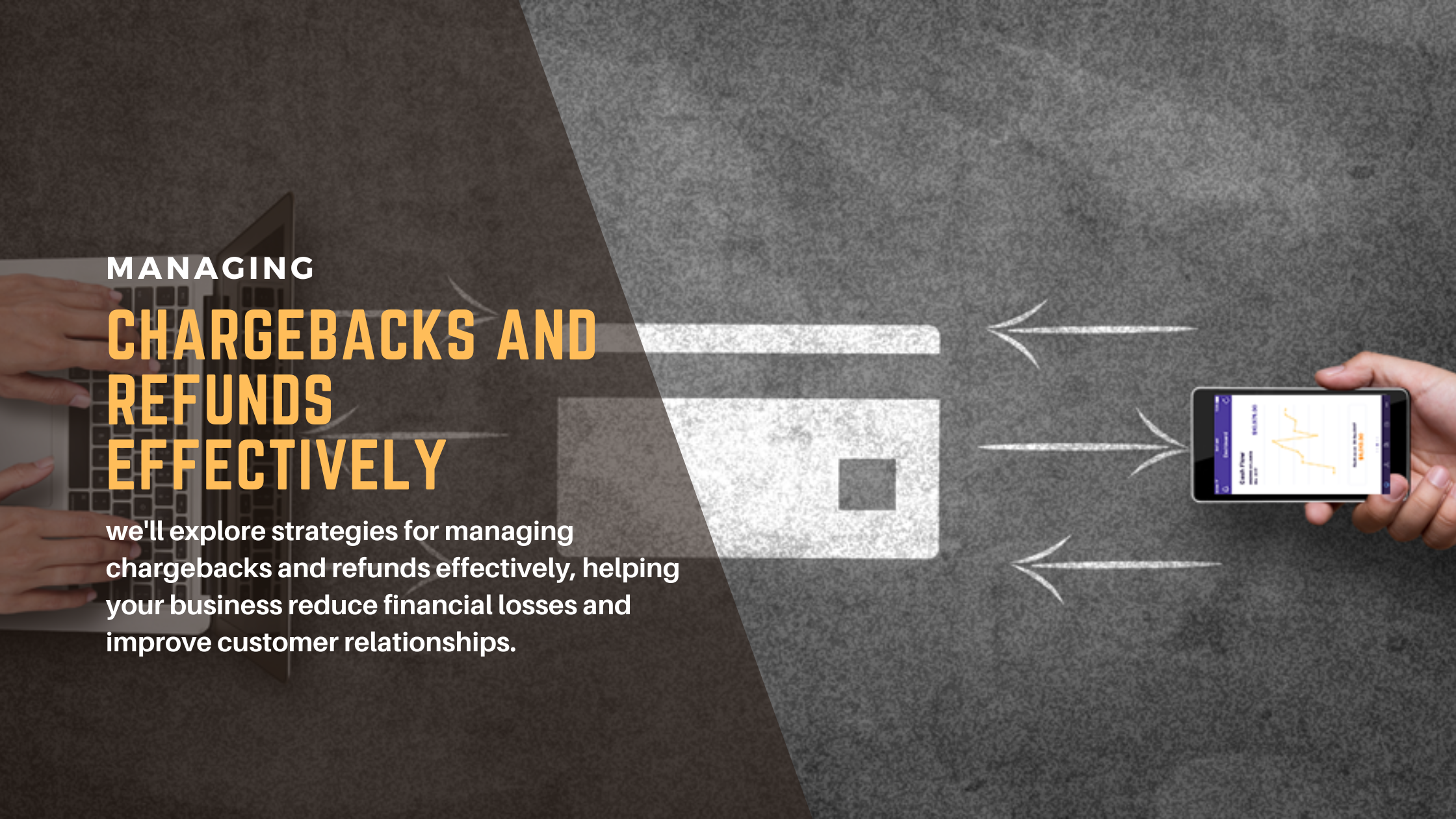December 4, 2025

-
Written by: Merchant Connect UK
- July 17, 2024

Managing Chargebacks and Refunds Effectively
Chargebacks and refunds are common challenges that businesses face, especially in the e-commerce sector. Effectively managing these issues is crucial to maintaining a healthy bottom line and ensuring customer satisfaction. In this blog post, we’ll explore strategies for managing chargebacks and refunds effectively, helping your business reduce financial losses and improve customer relationships.
Understanding Chargebacks
Chargebacks occur when a customer disputes a charge on their credit card, leading to the transaction being reversed. Common reasons for chargebacks include:
- Fraudulent Transactions: Unauthorized use of a customer’s credit card.
- Product or Service Not Received: The customer did not receive the product or service they paid for.
- Product Not as Described: The product received is significantly different from what was advertised.
- Duplicate Charges: The customer was charged multiple times for the same transaction.
Strategies for Managing Chargebacks
1. Implement Robust Fraud Prevention Measures
Fraud prevention is the first line of defense against chargebacks. Employ advanced fraud detection tools and techniques to identify and prevent fraudulent transactions. This can include:
- Address Verification System (AVS): Verifying the billing address provided by the customer with the address on file with the credit card issuer.
- Card Verification Value (CVV): Requiring the CVV number on the customer’s credit card for verification.
- 3D Secure Authentication: Adding an extra layer of security with 3D Secure (such as Verified by Visa or MasterCard SecureCode).
2. Provide Clear Product Descriptions and Policies
Ensure that your product descriptions are accurate and detailed. Misleading descriptions can lead to chargebacks when customers feel they did not receive what they were promised. Additionally, clearly outline your return and refund policies on your website to set proper expectations.
3. Offer Excellent Customer Service
Responsive and helpful customer service can resolve issues before they escalate to chargebacks. Make it easy for customers to contact you with questions or concerns, and respond promptly to resolve any problems.
4. Maintain Detailed Records
Keep thorough records of all transactions, including communications with customers, shipping information, and proof of delivery. This documentation can be crucial when disputing chargebacks with the credit card issuer.
Understanding Refunds
Refunds are a necessary part of doing business, especially in e-commerce. While refunds can be seen as a loss, they are also an opportunity to maintain customer satisfaction and loyalty. Common reasons for refunds include:
- Customer Dissatisfaction: The product did not meet the customer’s expectations.
- Order Errors: Incorrect items were sent or items were missing from the order.
- Product Issues: The product was damaged or defective.
Strategies for Managing Refunds
1. Simplify the Refund Process
Make the refund process straightforward for your customers. A complicated or lengthy process can lead to frustration and negative reviews. Clearly explain the steps for requesting a refund and provide a timeline for processing.
2. Automate Refunds Where Possible
Automate the refund process to improve efficiency and reduce manual errors. Automated systems can handle refund requests quickly, ensuring timely resolution for your customers.
3. Monitor and Analyze Refund Requests
Regularly monitor and analyze refund requests to identify patterns and common issues. Understanding why customers are requesting refunds can help you address underlying problems and improve your products or services.
4. Communicate Clearly with Customers
Keep customers informed throughout the refund process. Send confirmation emails when a refund request is received and notify them when the refund has been processed. Clear communication helps manage customer expectations and reduces follow-up inquiries.
Balancing Chargebacks and Refunds
While managing chargebacks and refunds effectively is essential, it’s also important to strike a balance. Excessive refunds can impact your profitability, while excessive chargebacks can damage your reputation and lead to higher processing fees or even termination of your merchant account.
Conclusion
Managing chargebacks and refunds effectively requires a proactive approach and a focus on customer satisfaction. By implementing robust fraud prevention measures, providing clear product descriptions and policies, offering excellent customer service, and maintaining detailed records, you can reduce the risk of chargebacks. Simplifying the refund process, automating where possible, monitoring refund requests, and communicating clearly with customers can help you handle refunds efficiently.
At Merchant Connect, we specialize in providing payment solutions that help businesses manage chargebacks and refunds effectively. Contact us today to learn how we can support your business in reducing financial losses and improving customer satisfaction.
We’ll Help You Start Accepting Payments
Contact us today to learn more about how we can meet all your payment processing needs.
Categories
- Banking(14)
- Industry Insights(37)
- Merchant Account(8)
- Online Payments(20)
Recent Post
November 24, 2025
Best Payment Gateway for High-Risk Startups: 2025 UK Guide
November 11, 2025
How AI Is Reducing Fraud in High-Risk Payment Processing
October 26, 2025
